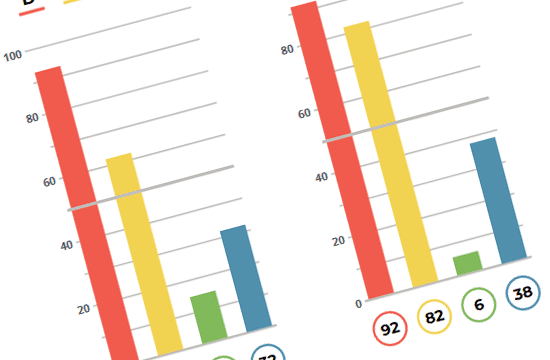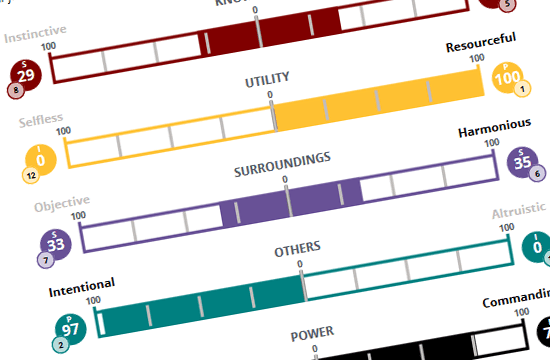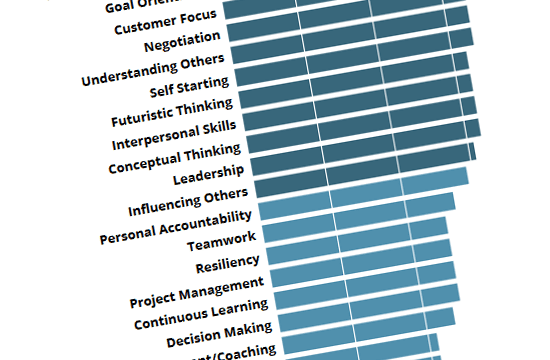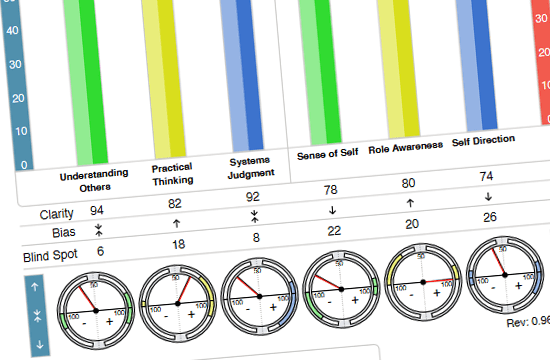Competency Modelling

People are multi-faceted
Your approach to Competency Modelling should be too.
Competencies encompass the behaviours, knowledge, skills, and attributes required for successful performance in a given role.
Many HR departments now use competency "frameworks", "models", or "maps". These are ultimately concerned with defining the specific list of skills for understanding what “excellence” looks for any job in the company.
Even though the definition is pretty simple, the role of competency models in organisational design has become extremely significant. In fact, as the war for talent continues to rage, many organisations have come to view competencies as foundational to effective talent management.

DISC Profile in Competency Modelling
This assessment measures 4 core behavioural tendencies.
The only way to accurately determine whether a person has a good behavioural match to a job is by benchmarking the job description associated with that specific job. A DISC benchmark simply reveals the ideal DISC graph for the job. Once a benchmark has been established, it can then be used to help the hiring manager flag aspects of the role that might conflict with a candidate who does not fit the ideal job profile.

Driving Forces Profile in Competency Modelling
This assessment measures 12 personal drivers or motivators.
Motivational job-fit is arguably the single most important job criteria to screen for when interviewing. Our values determine where we will tend to find enjoyment and fulfillment in the workplace. Starting with a motivational benchmark allows hiring managers to objectively determine what kind of person they are looking for, rather than simply hoping that the candidate will find the job engaging.

DNA Profile in Competency Modelling
This assessment measures 25 competencies or soft skills.
The DNA profile is so named because there are 25 soft skills that are the basis (or building blocks) for performance across many different roles. Through the process of job benchmarking, hiring managers are able to determine the soft skills that are most necessary to fulfill the key accountabilities of the job, and then use this information to help with screening candidates.

Acumen Capacity Index in Competency Modelling
This assessment measures 3 core dimensions of thought.
Everyone's brain has a unique thought process or model through which we filter and assess our views of the world. These patterns of thought determine our acumen: our ability to make good judgments (related to, but different from, business acumen). Understanding our acumen allows us to understand our natural talents and overall potential.
Your Difference: Multi-Science Profiles
One of the advantages of the TTI suite of tools is that we offer you “multi-science” reports, which provide integrated feedback. With this multi-dimensional view, leaders and managers are able to understand themselves and others at a much deeper level than just using a single assessment. The additional advantage to multi-science assessments is they provide you with a layered development plan for leaders. For example, leaders can work through information on their behavioural style, driving forces, and emotional intelligence in one short sitting or they can tackle it one phase at a time over several months. Multi-science reports provide better options for training, more comprehensive information, and more “ah-ha” moments.
